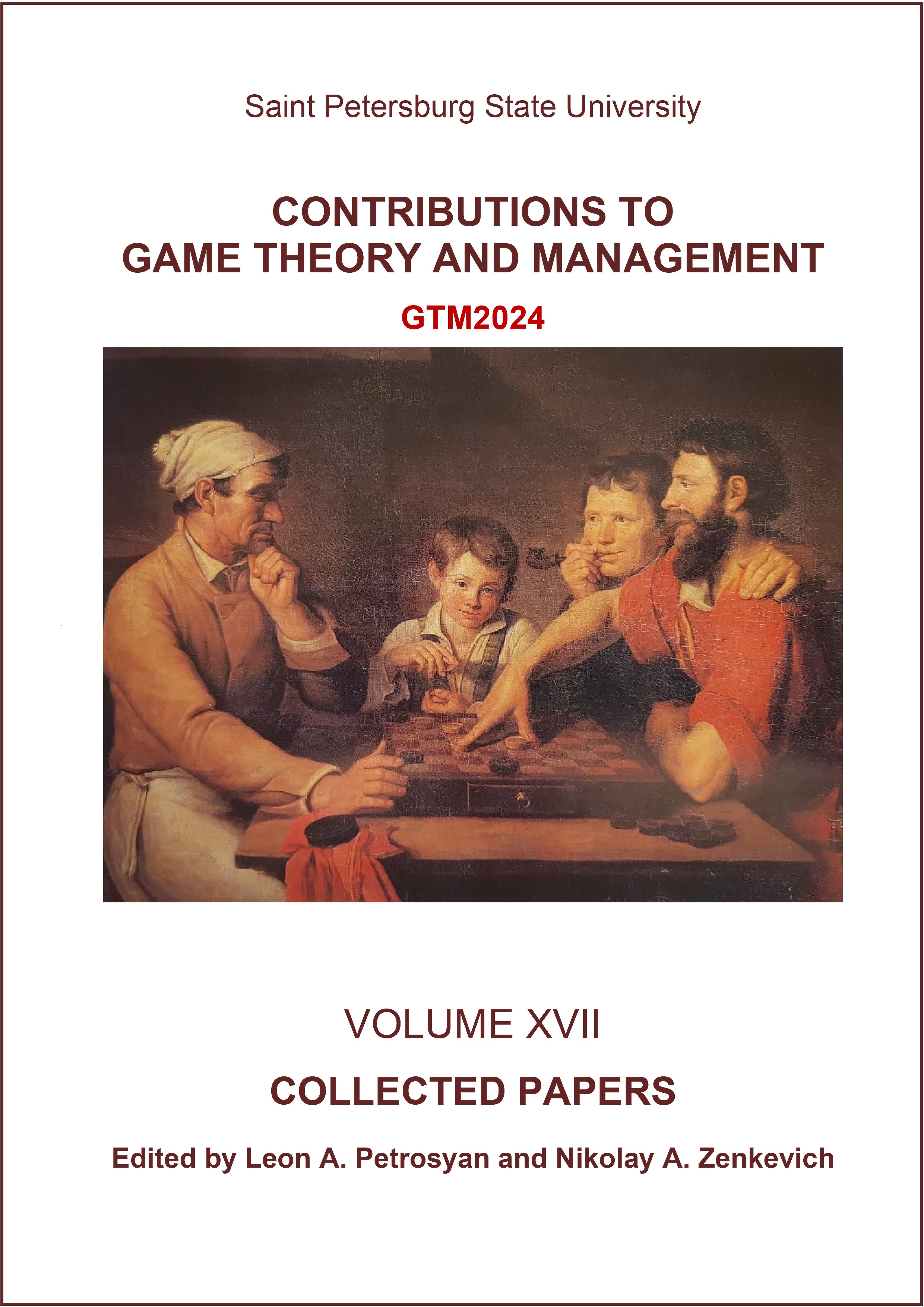Survey on SEIRD Epidemic Models with Different Focuses
Abstract
This study is a survey of several extended models based on SEIRD epidemics. The main contribution of the review is a modification of the classical SEIRD epidemic model, from single-layer to multi-layer to super-exposure, and from general vaccine to pre-emptive vaccine to twostage evolutionary-epidemic model. Assuming the presence of two viruses in a population, simultaneous and non-simultaneous occurrence of the two viruses was compared; assuming super-exposure between multiple viruses, general and pre-emptive vaccines were compared; and assuming that individuals have decision-making power over vaccination, the effect of the basic number of infections on the evolutionary stabilisation strategy was investigated. A series of numerical experiments support the theoretical results obtained.
Keywords:
Evolutionary games, Epidemics, ESS, Preemptive vaccine
Downloads
References
Accinelli, E., Sanchez Carrera, E. (2012). The Evolutionary Game of Poverty Traps. The Manchester School, 80(4), 381–400. https://doi.org/10.1111/j.1467-9957.2011.02262.x
Bauch, C. T. (2005). Imitation dynamics predict vaccinating behaviour. Proc Biol Sci., 272(1573), 1669–75. https://doi.org/10.1098/rspb.2005.3153
Bauch, C. T., Bhattacharyya, S. (2012). Evolutionary game theory and social learning can determine how vaccine scares unfold. PLoS computational biology 8.4 (2012): e1002452.
Bichara, D., Iggidr, A., Sallet, G. (2014). Global analysis of multi-strains SIS, SIR and MSIR epidemic models. J. Appl. Math. Comput. 44, 273–292. https://doi.org/10.1007/s12190-013-0693-x
Broom, M., Rychtář, J. (2022). Game-Theoretical Models in Biology (2nd ed.). Chapman and Hall/CRC. https://doi.org/10.1201/9781003024682
Cressman, R. (1995). Evolutionary stability for two-stage Hawk-Dove games. The Rocky Mountain Journal of Mathematics, 25(1), 145–55. http://www.jstor.org/stable/44237874.
Disease outbreaks. World Health Organization (WHO). [2020-12-21].
Eshghi, S., Khouzani, M. H. R., Sarkar, S., Venkatesh, S. S. (2016). Optimal Patching in Clustered Malware Epidemics. In: IEEE/ACM Transactions on Networking, vol. 24, no. 1, pp. 283–298, Feb. 2016, https://doi.org/10.1109/TNET.2014.2364034
Fu, F., Rosenbloom, D. I., Wang, L., Nowak, M. A. (2011). Imitation dynamics of vaccination behaviour on social networks. Proc. R. Soc. B.27842–49 http://doi.org/10.1098/rspb.2010.1107
Grass, D., Caulkins, J., Feichtinger, G., Tragler, G., Behrens,D. (2008). Optimal Control of Nonlinear Processes: With Applications in Drugs, Corruption, and Terror. https://doi.org/10.1007/978-3-540-77647-5
Gubar, E., Taynitskiy, V., Zhu, Q. (2018). Optimal Control of Heterogeneous Mutating Viruses. Games, 9(4), 103. https://doi.org/10.3390/g9040103
Gubar, E., Taynitskiy, V., Fedyanin, D., Petrov, I. (2023). Quarantine and Vaccination in Hierarchical Epidemic Model. Mathematics, 11(6), 1450. https://doi.org/10.3390/math11061450
Gubar, E., Taynitskiy, V., Dahmouni, I. (2023). The impact of fake news on infection dynamics in Pandemic control: An evolutionary SIR model. IFAC PapersOnLine, 56(2), 1778–1783, ISSN 2405-8963, https://doi.org/10.1016/j.ifacol.2023.10.1889
Hethcote, H. W., van den Driessche, P. (1991). Some epidemiological models with nonlinear incidence. J Math Biol., 29(3), 271–87. https://doi.org/10.1007/BF00160539
Khouzani, M. H. R., Sarkar, S., Altman, E. (2012). Maximum Damage Malware Attack in Mobile Wireless Networks. In: IEEE/ACM Transactions on Networking, vol. 20, no. 5, pp. 1347–1360, Oct. 2012, https://doi.org/10.1109/TNET.2012.2183642
Khouzani, M. H. R., Sarkar, S., Altman, E. (2011). Optimal control of epidemic evolution. 2011 Proceedings IEEE INFOCOM, Shanghai, China, 2011, pp. 1683–1691, https://doi.org/10.1109/INFCOM.2011.5934963
Liu, X., Gubar, E. (2023). Optimal Control in the Network Model of Bi-virus Propagation. Contributions to Game Theory and Management, 15, 265–286. https://doi.org/10.21638/11701/spbu31.2022.20
Liu, X., Gubar, E. (2024). Optimal control in models of virus propagation. EAI Endorsed Trans Perv Health Tech [Internet]. 2024 May 13 [cited 2024 Jul. 14];10. Available from: https://publications.eai.eu/index.php/phat/article/view/6041
Pastor-Satorras, R., Castellano, C., Mieghem, P. et al. (2014). Epidemic processes in complex networks. ArXiv, abs/1408.2701. https://doi.org/10.1103/RevModPhys.87.925
Taynitskiy, V., Gubar, E., Zhu, Q. (2019). Optimal Impulse Control of SIR Epidemics Over Scale-Free Networks. In: Song, J., Li, H., Coupechoux, M. (eds) Game Theory for Networking Applications. EAI/Springer Innovations in Communication and Computing. Springer, Cham. https://doi.org/10.1007/978-3-319-93058-9_8
Shim, E., Chapman, G. B., Townsend, J. P., Galvani, A. P. (2012). The influence of altruism on influenza vaccination decisions. J R Soc Interface, 9(74), 2234–43. https://doi.org/10.1098/rsif.2012.0115
van den Driessche, P., Watmough, J. (2002). Reproduction numbers and sub-threshold endemic equilibria for compartmental models of disease transmission. Math Biosci. 180, 29–48. https://doi.org/10.1016/s0025-5564(02)00108-6
Wang, Y., Chen, H., Gu, X. (2023). A Two-Stage Evolutionary Game Model for Collaborative Emergency Management Between Local Governments and Enterprises. Int J Disaster Risk Sci, 14, 1029–1043. https://doi.org/10.1007/s13753-023-00531-9
Zhao Shi-jie, LI Da-pu (2011). Stability and Hopf Bifurcation of a Delayed SIS Model with Species Logistic Growth and a Nonlinear Incidence Rate. Journal of Guangxi Academy of Sciences, 27(1), 6–9, 16.
Downloads
Published
How to Cite
Issue
Section
License
Articles of "Contributions to Game Theory and Management" are open access distributed under the terms of the License Agreement with Saint Petersburg State University, which permits to the authors unrestricted distribution and self-archiving free of charge.




